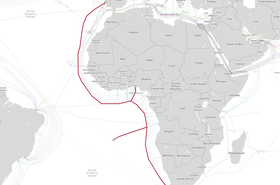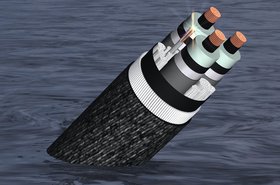Ireland's security services suspect Russia of sending intelligence agents to the country to map the precise location of submarine cables and landing stations.
The claim, published in The Sunday Times of London, was presented without evidence. Irish security services reportedly believe that the agents were sent by Russia's foreign intelligence agency, the GRU.
A history of taps
Submarine cables - responsible for the vast majority of intercontinental Internet traffic - have long been targets of vying intelligence agencies.
In the 1970s, the US National Security Agency launched Operation Ivy Bells, a scheme to use submarines and combat divers to tap communications cables between Soviet naval bases.
In the modern era, the NSA and the UK's GCHQ embarked on numerous programs to tap cable landing stations. Whistleblower Edward Snowden revealed that the UK's Tempora project essentially tapped all traffic flowing through the country (and through Ireland), while the US's Oakstar, Stormbrew, Blarney, and Fairview, were able to capture the majority of American outbound and inbound data.
With both nations home to landing stations carrying the most Internet traffic, the UK and the US have been able to carry out their operations on land, often with the knowledge of the companies being tapped.
Russia, however, has a far less fundamental role in the infrastructure of the Internet - for example, someone in Brazil communicating with someone in Spain over the Internet will likely see their data pass through both the US and UK, but most traffic traveling through Russia is for Russian audiences.
The country is thought to tap its own Internet connection points, but this provides scant information on global communications.
Instead, Russia is believed to have turned to tapping cables as they lie on the ocean floor - although, America's USS Jimmy Carter also has this capability.
The Yantar ‘oceanographic research vessel’ is a Russian ship which carries with it several mini-submarines capable of diving six thousand meters, along with unspecified remote operated vehicles. Specialist publication HI Sutton provided a deep dive into what is known about the ship, and tracked how it had a habit of loitering near known submarine cable routes.
Another possible tapping vessel was the AS-12 Losharik nuclear submarine, which caught fire last year. While Russia has denied the activities of both vessels, a Defense Ministry-owned news channel in 2015 said that the country can "both cut the special communication cables on the ocean floor and scan the signals they carry."
As society and financial services become increasingly reliant on the cables, fear of them being cut has grown. Accidental cuts have slowed or even outright killed the Internet for some countries, although it is a much greater threat for smaller nations with only one or two cables.
Taking out the UK or US would require a significant number of cuts across redundant networks, and it is not clear whether any nation has the capability to pull off such an audacious operation.
Despite this, some have warned about the threat. Just as the UK's military budget was coming up for review in late 2017, the influential center-right think tank Policy Exchange published a report warning that a "co-ordinated sabotage on multiple cables has the potential to pose a major threat to the UK."
The impact of cable damage would most heavily be felt by the financial sector, it warned, with roughly 213 cables carrying an estimated $10 trillion of financial transfers and 15 million financial transactions every day.
The report stated: “Put simply, if an adversary were to succeed in executing a successful attack against Britain’s undersea cable infrastructure the result would be financial disaster on an unprecedented scale.”
The purported author of the report, politician Rishi Sunak, was this month made the Chancellor of the Exchequer, head of the UK's Treasury.





